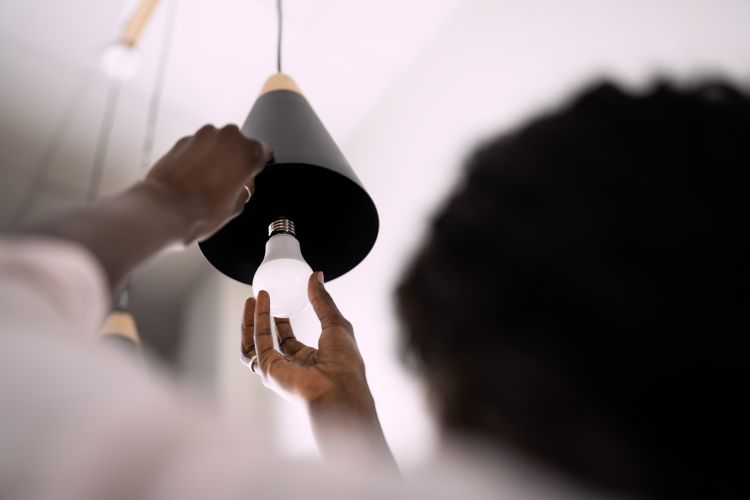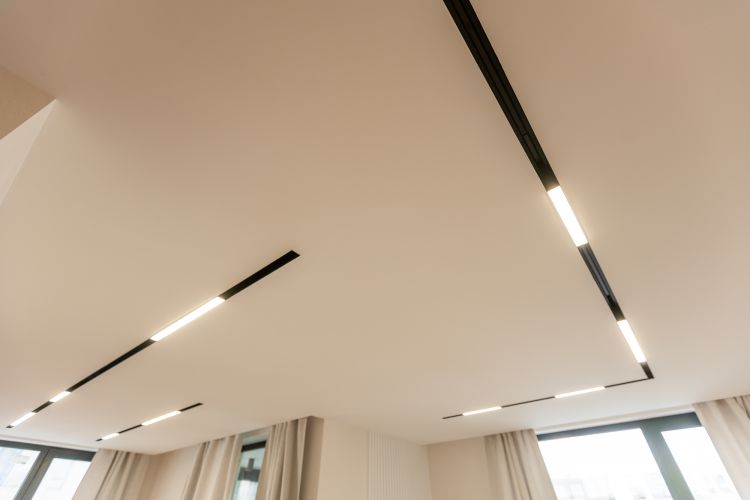 Light Emitting Diode or LED lighting has revolutionized how we illuminate our homes and businesses, offering energy efficiency, long-lasting performance, and versatile design options. LED benefits include lower maintenance costs and a longer lifespan than traditional lighting options.
Light Emitting Diode or LED lighting has revolutionized how we illuminate our homes and businesses, offering energy efficiency, long-lasting performance, and versatile design options. LED benefits include lower maintenance costs and a longer lifespan than traditional lighting options.
Before you make the switch, it’s essential to familiarize yourself with the crucial aspects of LED lighting. This blog post will cover ten key things to know before installing LED lights at home.
1. Types Of LED Lights
There are several LED lights, including bulbs, tubes, panels, and strips. Each type serves a different purpose and offers unique benefits. For instance, LED bulbs are suitable for general-purpose lighting, while LED strips are ideal for accent lighting and under-cabinet illumination. Assess your needs before deciding on the right LED lights for your home.
2. Color Temperature
LED lights provide bright, consistent light output and are available in various color temperatures, making them suitable for creating warm, cozy atmospheres and cool, modern environments.
3. Utility
LED lights can be used in various home areas, including living rooms, kitchens, bedrooms, and outdoor spaces. They are ideal for general-purpose lighting, accent lighting, and task lighting.
LED lights are ideal for task lighting, providing focused illumination for reading, cooking, or desk work. LED desk lamps, under-cabinet lights, and flexible LED strips can provide targeted light where needed most, improving visibility and reducing eye strain.
They are versatile and can be used for accent lighting to highlight architectural features, artwork, or specific room areas. LED strip lights, spotlights, and recessed lights can create dramatic effects and draw attention to focal points in your home.
LED lights are also an excellent choice for outdoor lighting due to their durability and energy efficiency. They can be used for pathway lighting, landscape lighting, security lighting, and decorative purposes. Consider where you need better illumination before deciding on the appropriate LED lights.
4. Installation
It’s important that electrical work, including LED light installation, must be performed by a licensed electrician. DIY electrical work is illegal in some countries and can be dangerous. Hiring a licensed electrician or company like Electrician Balgowlah ensures the LED lights are installed correctly in compliance with safety standards and regulations.
5. Safety And Wiring Circuitry
Some countries have stringent safety standards and regulations for electrical products, including LED lighting, to ensure the safety and well-being of their citizens. Installing LED lighting in your home requires proper planning and attention to your existing electrical system. Here are some safety measures and examples:
- Compatibility With Existing Wiring
Before installing LED lights, ensure that your home’s existing wiring can support the new lighting system. LED lights typically have lower power requirements than traditional incandescent or halogen bulbs, making them compatible with most existing wiring systems. However, it’s essential to consult a licensed electrician to assess your home’s wiring and verify compatibility.
- Circuit Capacity
Another crucial consideration is the overall capacity of your home’s electrical circuits. While LED lights consume less energy, it’s important not to overload your circuits. Check the total wattage of the LED lights you’re installing and ensure it is within the capacity of your home’s wiring and circuit breakers. A licensed electrician can determine the appropriate load capacity for your home’s circuits.
- Transformers And Drivers
Some LED lighting systems, particularly low-voltage LED lights, may require transformers or drivers to regulate the voltage supplied to the lights. When installing LED lights, it’s essential to use compatible transformers or drivers to ensure proper operation and avoid potential damage.
Though LED lights are generally safer than traditional lighting options as they are less likely to cause fires, they still emit some heat that needs to be dissipated, so ensure adequate ventilation.
 6. Dimming Compatibility
6. Dimming Compatibility
If you plan to use dimmable LED lights, ensuring compatibility between the LED lights, dimmer switches, and your home’s wiring is essential. Some existing dimmer controls may not be compatible with LED lights, requiring an upgrade to LED-compatible dimmer switches.
7. Energy Efficiency
LED lights are significantly more energy-efficient than incandescent and CFL (compact fluorescent light) bulbs. They use up to 75% less energy than incandescent bulbs and about 50% less energy than CFLs. This improved efficiency translates into substantial savings on electricity bills over time and lower greenhouse gas emissions associated with electricity production.
Furthermore, many LED lights are dimmable and can be controlled using smart home systems, allowing homeowners to optimize energy.
8. Lifespan
LED lights have a longer lifespan than other lighting options, with an average life expectancy of 25,000 to 50,000 hours. In contrast, incandescent bulbs last around 1,000 hours, and CFLs last approximately 10,000 hours.
This means you’ll need to replace LED lights less frequently, resulting in lower maintenance costs and fewer replacements over time.
Fewer replacements also reduce the waste generated and the resources needed for manufacturing new bulbs.
9. Quality And Standards
Invest in high-quality LED lights from reputable manufacturers. Low-quality or counterfeit products may not meet safety standards, putting your home at risk.
LED light manufacturers must comply with the relevant safety standards to be legally sold and installed. These standards ensure that LED lights meet the necessary safety requirements, such as electrical insulation, thermal management, and electromagnetic compatibility.
10. Environmentally Friendly
Aside from increased energy efficiency and a longer lifespan that makes it environmentally friendly, LED lights do not contain hazardous materials like mercury, which is found in CFL bulbs. Mercury harms the environment and human health, making its disposal a significant concern.
Conclusion
LED lighting has genuinely revolutionized our homes. This greener and safer alternative can save homeowners money in the long term, plus it’s energy-efficient and environmentally friendly.




